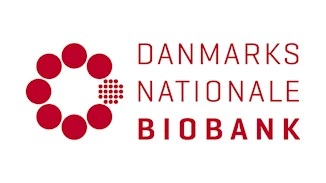Biological samples in the DNB
The Danish National Biobank (DNB) at SSI stores millions of biological samples. With some exemptions most samples are available for use in research projects and some are simply stored by SSI on behalf of an external institution
The different biological collections in DNB have been collected for diverse purposes, and further use of the samples therefore depends on the initial purpose of the collection, as disclosure of the material may be particularly regulated. SSI cannot disclose biological material for which we are not data controller, but simply store the material on behalf of an external company/institution or public authority.
Samples fall in two categories
The biological material in DNB comprises two main categories:
a) Samples that fall under SSI's data controller responsibility and decision-making competence. These include diagnostic samples submitted to SSI’s laboratory, including filter paper samples from the national neonatal screening programme (PKU cards), and/or samples from the public health service, which are passed on to the SSI who becomes data controller for the samples. Left-over material from routine tests carried out by other public health authorities may be passed on to the DNB and may be used for research purposes. Samples collected in research projects for which SSI is the data controller also fall into this category.
b) For other samples, i.e. samples simply stored by SSI (as data processor) on behalf of other parties, or samples from specific research projects in Denmark, the original collection purpose may restrict the use of the biological material for other purposes. External parties may use DNB for storage and handling of sample retrieval and delivery only. If a researcher wishes to gain access to biological material from such external parties, it is up to the steering committee for the research project in question to ensure compliance with all relevant data protection regulation and the Danish Ethical Committee Act.
Samples and data can be linked
A large percentage of DNB samples stem from specific research projects, from treatment of patients or from national screening programmes. This means that data about donors and screening results often are available. Using the Danish Biobank Register information such as donor age, gender, diagnosis, operation procedures etc. can be linked to the samples.

Biological samples in the Danish National Biobank
| Sample type | Samples | Individuals |
| Serum | 3,317,536 | 951,521 |
| Dried blood spot samples | 2,565,821 | 2,091,587 |
| Plasma | 1,488,350 | 442,752 |
| Whole blood | 830,524 | 320,872 |
| DNA |
678,237 | 451,455 |
| Buffy coat | 346,033 | 126,527 |
| Urine |
320,456 | 126,054 |
| Saliva | 90,407 | 42,554 |
| Red blood cells | 85,349 | 41,738 |
| Amniotic fluid | 66,407 | 56,505 |
| Cord blood mononuclear cells |
65,032 | 65,032 |
| Proteins extracted from DBSS | 39,168 | 38,979 |
| Spinal fluid |
28,596 | 16,498 |
| Other (PBMS, feces, stem cells, biopsies, etc.) |
83,430 | 49,040 |

Contact
Danish National Biobank
T. +45 5122 6605
@. mail@nationalbiobank.dk
View profile
